“We are a singularity that makes music out of noise because we must hurry. We make a harvest of loneliness and desiring in the blank wasteland of the cosmos.” -Jack Gilbert
This past week at Starts With A Bang saw five new stories about the Universe, from our own home planet to topics about the birth of the Universe (and how we know it broke down that way), as well as our limits. Check out what we’ve covered:
- Newton's random apple (for Ask Ethan),
- Velociprincesses (for our Weekend Diversion),
- The first bone of the Milky Way's skeleton (for Mostly Mute Monday),
- Exoplanets & the search for habitable worlds (as a live-blog treat),
- Have we just found the first stars in the Universe?, and
- A static electricity surprise (for our Throwback Thursday).
On top of that, I had a new piece over at Forbes:
You were relatively quiet this week, which just means that a greater percentage of the comments you left will get answered. So let's get going with our Comments of the Week!
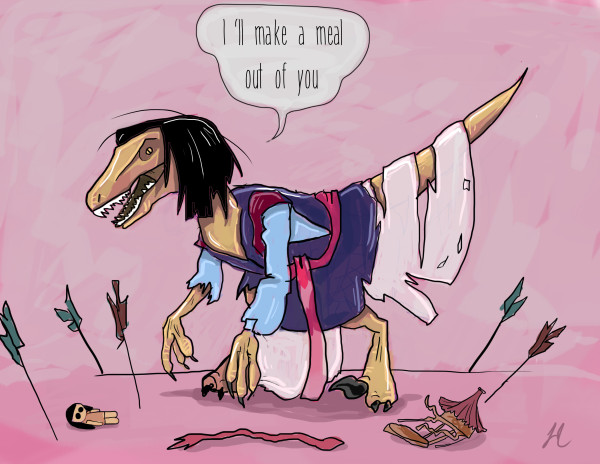 Image credit: Laura Cooper, via http://xpwebcomic.com/gallery/.
Image credit: Laura Cooper, via http://xpwebcomic.com/gallery/.
From Denier on the topic of Disney Princesses: "Disney Princesses are such fertile ground for parody. While the ‘what I learned from Disney Princesses’ is fun, my favorite is the treatment Seth Green and company gave to the evolution of what personality traits have been exhibited by Disney Princess from the beginning until now."
No one ever remembers Matt Senreich the same way they do Seth Green, but he's just as responsible for the Robot Chicken skits. Although you should all enjoy the skit in question here, I thought it would be fun to rank which Disney princesses would do the best -- in my opinion -- in a Disney-style Hunger games.
1.) Merida: the "brave" girl from Brave can not only take care of herself, she's smart, talented, confident, and incredibly skilled with deadly weapons. If the Disney princesses had a battle royale, she'd be the odds-on favorite. However, as a loner, she's vulnerable to being teamed up on, and is quite the target.
2.) Mulan: she trains, she fights, she wins, she rules. She even teaches all the men -- who initially despise her -- the power of craftiness, wits, and using the resources you have to the best of your abilities.
3.) Belle: look, none of the other princesses have any sort of special powers. Aurora and Snow White just lie there in a coma; Ariel sings, gives up the one thing that makes her notably special, and gets herself turned into a sea plant getting tricked by a very, very lazy ruse; the pickings are pretty slim. But Belle chooses her own destiny, and has that inner strength that I wouldn't put it past her to pull this off. If Merida and Mulan both go down, Belle would be my next choice to emerge as the victor. Trust me on this one.
*Note: Anna and Elsa are not allowed in this competition. They'd never fight each other, and much like in the Highlander, there can be only one! And now, onto the science.
Image credit: A. Goodman et al. (2014), NASA / Spitzer Space Telescope, via https://www.cfa.harvard.edu/news/2013-02.
From PJ on the Milky Way's bones: "Jaw-dropping, without a doubt ….."
One of the fun things about getting your hands on the really high-resolution images is that you can see features that most folks normally miss when looking at these objects. I mean, take a look at just a fraction of what we've got here!
 Image credit: Goodman, Alves, Beaumont, Benjamin, Burkert, Borkin, Dame, Jackson, Kauffmann, Robitaille and Smith 2014, via http://milkywaybones.org/media-gallery/detail/13836/54441.
Image credit: Goodman, Alves, Beaumont, Benjamin, Burkert, Borkin, Dame, Jackson, Kauffmann, Robitaille and Smith 2014, via http://milkywaybones.org/media-gallery/detail/13836/54441.
These dusty features obscure the light coming from behind them, sure, but they do a whole lot more than that! What looks like "dark spots" silhouetting against the backdrop of other matter and light sources are the densest light-blocking spots, the cold dust, that will give rise to new stars at the centers of spiral arms.
You might not realize it looking at this image, but if we look at similar wavelengths in other galaxies, you'll recognize what's happening immediately.
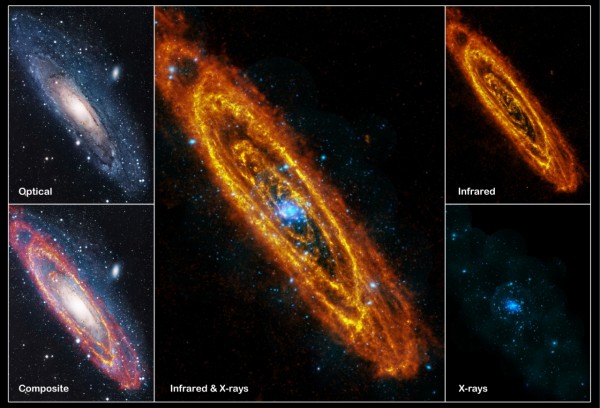 Image credit: infrared: ESA/Herschel/PACS/SPIRE/J. Fritz, U. Gent; X-ray: ESA/XMM-Newton/EPIC/W. Pietsch, MPE; optical: R. Gendler.
Image credit: infrared: ESA/Herschel/PACS/SPIRE/J. Fritz, U. Gent; X-ray: ESA/XMM-Newton/EPIC/W. Pietsch, MPE; optical: R. Gendler.
The infrared views we get are capable of highlighting these features, tracing out where the central regions of the spiral arms are. This is the dust that will form the next generation of stars, and these are the "bones" of other grand spirals.
The fact that we found the first one in the Milky Way is an incredible tease of things to come as our technology improves. It always fascinates me that the Milky Way is one of the least understood galaxies around, because our very presence within it prevents us from mapping it well. Just like you could never know your own eye color if it weren't for reflective surfaces, photographs or other people telling you what it was, the fact that we're inside the Milky Way itself works against us in tremendous ways. So finding these bones is quite a nice achievement for the Spitzer team!
This is going to turn into PJ week, by the way, with his question about blocking the Sun's light: "What would be the advantage of using such a large diaphragm to block the disc of a distant star compared to that of the likes of SOHO with an occulting disc at focus which is more than capable of hiding SOL without circular diffraction issues? Since any stars being investigated are going to be of such a small angular diameter, is it practical to use a similar method to observe those potential planets?"
The problem here is one of relative brightnesses. When you block out the Sun's light with a coronagraph -- just a disk -- you can clearly and easily see the Sun's corona. But the corona is a whopping 0.0001% as bright as the Sun! If all you did was block out the parent star with a coronagraph, you'd be able to see a whole bunch of fainter objects, but these worlds we're looking for are only 0.00000001% as bright at the stars they orbit, meaning we have to do better at canceling out the light coming from the star.
Any light coming from the region outside of the Sun due to, say, diffraction, will hinder your ability to observe what's truly there, and in the case of a faint planet, particularly in the case of a faint habitable zone planet, these circular diffraction fringes are unfortunately ruinous.
 Image credit: Amy S. Lo et al. (2010), from the Starshade Technology Development Astro2010 Technology Development White Paper.
Image credit: Amy S. Lo et al. (2010), from the Starshade Technology Development Astro2010 Technology Development White Paper.
Sinisa Lazarek posted a very nice link to the white paper on the Starshade, which explains how and why in great detail. Reducing circular diffraction -- and doing it with the Starshade at such a distance that it truly only blocks the disk of the star in question -- enables us to see down to that desired sensitivity. This requires meticulous positioning of the Starshade at the "proper" distance and in the right location.
This is one of the greatest technical challenges for everyone involved! But for a billion dollars, the ability to find life beyond Earth in the Universe might be a big enough payoff. Stay tuned!
Image credit: Amy S. Lo et al. (2010), from the Starshade Technology Development Astro2010 Technology Development White Paper.
From Llewelyn Evans on the Starshade's alignment: "The Starshade is a neat idea, but how do you hold the relative position between the Starshade and the space telescope at large distances such as 80,000km? They are both in different orbits around the Sun, and some kind of, [e.g.] ion, propulsion is need to counteract the Sun’s gentle tidal force, otherwise they would drift out of alignment."
There is a lot more than simple ion propulsion required, an entire system for trajectory and alignment control (TAC) is needed. There is going to be need for the use of thrusters not only for maintenance of position, as you indicate, but for maneuvering into this intricate position to start. The major risks are twofold:
- If the TAC does not have sufficient control authority due to complexities in the software algorithm, or operations, then mission science return may be reduced or delayed.
- If the thruster firing overwhelms the starshade ACS due to starshade-spacecraft dynamic coupling, then the spacecraft may go out of control.
The reason I cite these as major risks is that if either of these "ifs" come true, there's a greater than one-in-four estimated chance that we will lose the Starshade. The way to mitigate these risks is to develop two types of sensors: an astrometric sensor for the Starshade itself, and a "shadow sensor" to be mounted on the telescope in question.
 Image credit: Amy S. Lo et al. (2010), from the Starshade Technology Development Astro2010 Technology Development White Paper.
Image credit: Amy S. Lo et al. (2010), from the Starshade Technology Development Astro2010 Technology Development White Paper.
These sensors and their technology is all within the current state-of-the-art technology, except for the Astrometric accuracy requirement, since the JMAPS instrument was cancelled in 2012.
For my money, a billion dollars to learn this amazing thing -- the life-signature content of about ~50 potentially habitable worlds -- would've been unfathomable before Kepler, itself a $600 million project. To be able to look out into the Universe and begin to understand not only the presence of these Earth-like planets, but the content of these Earth-like worlds would be absolutely amazing. When you consider, given how many of us there are and how little $1 billion is in the grand scheme of things when we all pitch in together (or, if you prefer, there are about 440 Americans, and over 2,000 people worldwide, who could pay for this mission on their own), I think it's easily worth it. To me, this is the next logical step in planet-hunting science.
From nobody on the first stars in the Universe: "So what will it actually take to learn whether these are metal-poor or metal-free stars?"
Really, everyone? We find the first signature of potential Population III stars in the Universe, I get an exclusive interview with the PI of the discovery team, and no one wants to know what it would actually take to learn what it'll take to find out whether these are real Pop III stars, or just very metal poor Pop II stars?
Well, I want to tell you anyway.
 Image credit: S.F. Sanchez, A. Humphrey (2008), via http://inspirehep.net/record/803380.
Image credit: S.F. Sanchez, A. Humphrey (2008), via http://inspirehep.net/record/803380.
Do you see the HeII and the OIII] lines, above? These combinations are always found together in ionized, actively star-forming regions and galaxies. They correspond to rest-frame wavelengths of UV-radiation, and in particular we always detect the combinations of: CIV (1549 Å), HeII (1640 Å), OIII] (1663 Å) and CIII] (1909 Å), and yet there are no carbon or oxygen signatures yet found.
But the HeII line is -- although robust -- still pretty weak above the continuum. We've "only" shown that the carbon/oxygen-to-helium ratio is no bigger than about 0.0001, which is tremendous, and makes it already the most metal-poor region like this ever discovered. But it's not the same as getting down to those extra three decimal places that would make it truly an "Oh my, this is really pristine, and has never had stars in it before" moment. So we need better spectra, which means more light. Come on, Hubble; you got anything better to do?
Image credit: the Scan Snap community, via flickr at https://www.flickr.com/photos/scansnap/4098612793/.
And finally, to complete his trifecta, from PJ one last time, on static electricity here: "I remember having to give the ream of photocopier/typing paper a good whack before using it. That was to stop the sheets clinging to each other."
Practically, that is a good way to reduce paper sheet static electricity, the same way you can often "kill" a magnet by banging it really hard: add energy, and re-randomize the configuration, which brings it back closer to equilibrium. But it's very interesting to me that "contact charging" works both exactly as you expect, by one material preferentially "stealing" charge from the other, leaving them equally and oppositely charged, and completely counter to how we thought, with individual sheets (or whatever) containing myriads of regions of positive-and-negative charge.
It's interesting that they're not truly random, but clustered on micron scales, presumably dealing with some sort of microscopic (but not nano-scopic) surface properties. Amazing that after all of these years of thinking we understood static electricity, there's plenty more to learn. Interestingly enough, that might apply to pretty much anything that we look at in greater and greater detail: there's always more to learn.
I hope you enjoyed this week, and that you'll join me next week as we continue our exploration of everything in the Universe that it has to teach us about itself. I know I'll still be curious!

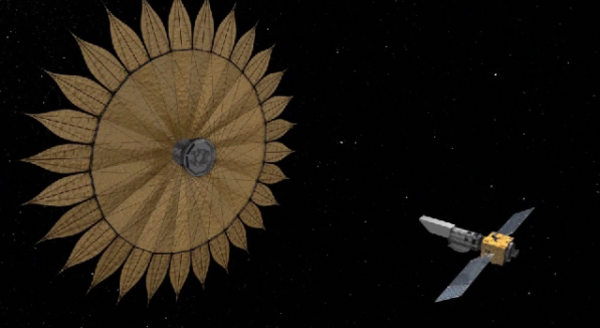
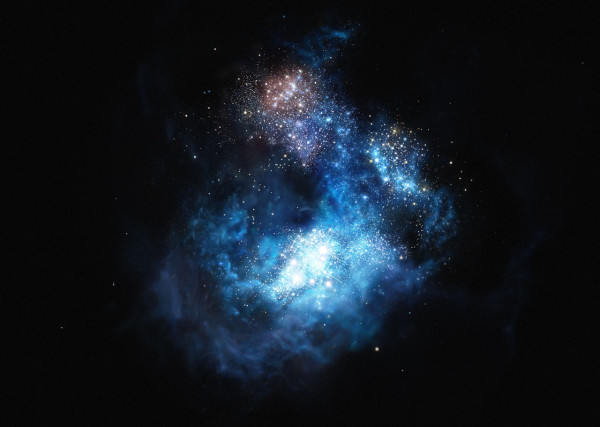
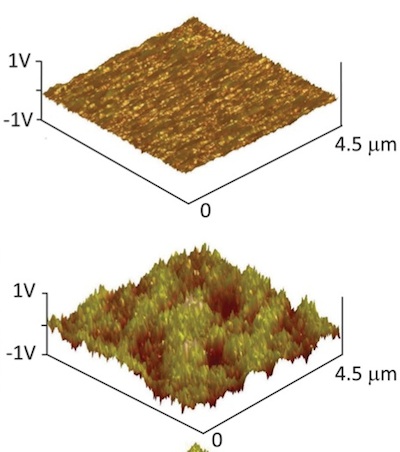
I'm glad Merida is considered a Disney Princess. Brenda Chapman, who wrote and directed Brave, had previously done work on The Little Mermaid, The Rescuers Down Under, Beauty and the Beast, The Lion King, The Hunchback of Notre Dame, and Fantasia 2000. Everything about that movie screamed 'Disney' although Brave is technically a Pixar movie.
Disney forced that steaming pile down Pixar's throat while at the same time stealing away Wreck-it-Ralph which was Executive Produced by Mr. Pixar: John Lasseter, and co-written by WALL-E alum Jim Reardon.
For those of you who have kids and have watched these two films dozens if not hundreds of times and thought Disney's Wreck-it-Ralph seemed very Pixar-ish while Merida from Pixar's Brave is very much a Disney Princess, you're not wrong.
Disney realized it didn't have the mojo anymore, so they went out and bought the mojo-ist group they could find and slapped their name on it..